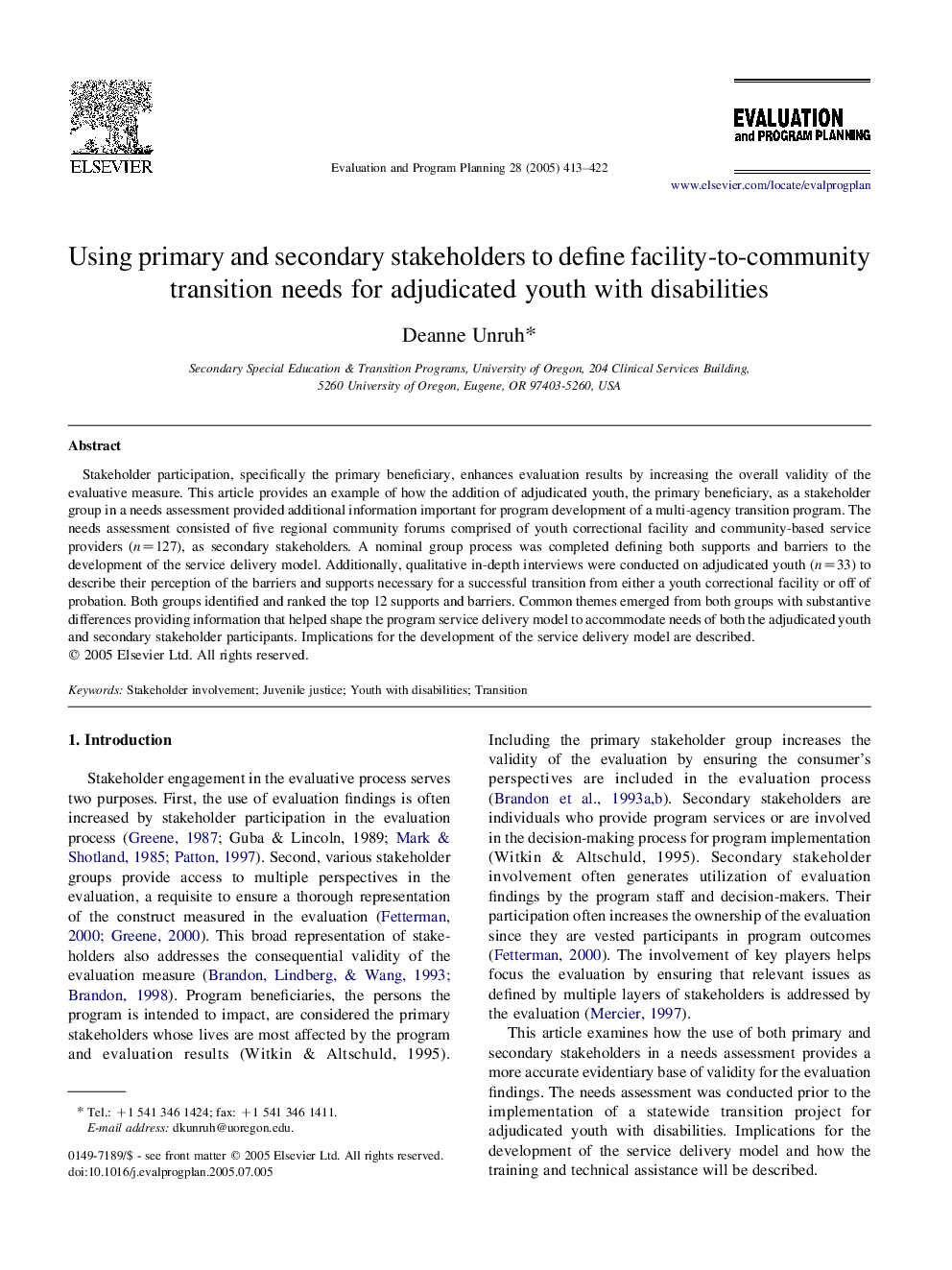| Article ID | Journal | Published Year | Pages | File Type |
|---|---|---|---|---|
| 10300636 | Evaluation and Program Planning | 2005 | 10 Pages |
Abstract
Stakeholder participation, specifically the primary beneficiary, enhances evaluation results by increasing the overall validity of the evaluative measure. This article provides an example of how the addition of adjudicated youth, the primary beneficiary, as a stakeholder group in a needs assessment provided additional information important for program development of a multi-agency transition program. The needs assessment consisted of five regional community forums comprised of youth correctional facility and community-based service providers (n=127), as secondary stakeholders. A nominal group process was completed defining both supports and barriers to the development of the service delivery model. Additionally, qualitative in-depth interviews were conducted on adjudicated youth (n=33) to describe their perception of the barriers and supports necessary for a successful transition from either a youth correctional facility or off of probation. Both groups identified and ranked the top 12 supports and barriers. Common themes emerged from both groups with substantive differences providing information that helped shape the program service delivery model to accommodate needs of both the adjudicated youth and secondary stakeholder participants. Implications for the development of the service delivery model are described.
Related Topics
Health Sciences
Medicine and Dentistry
Public Health and Health Policy
Authors
Deanne Unruh,
